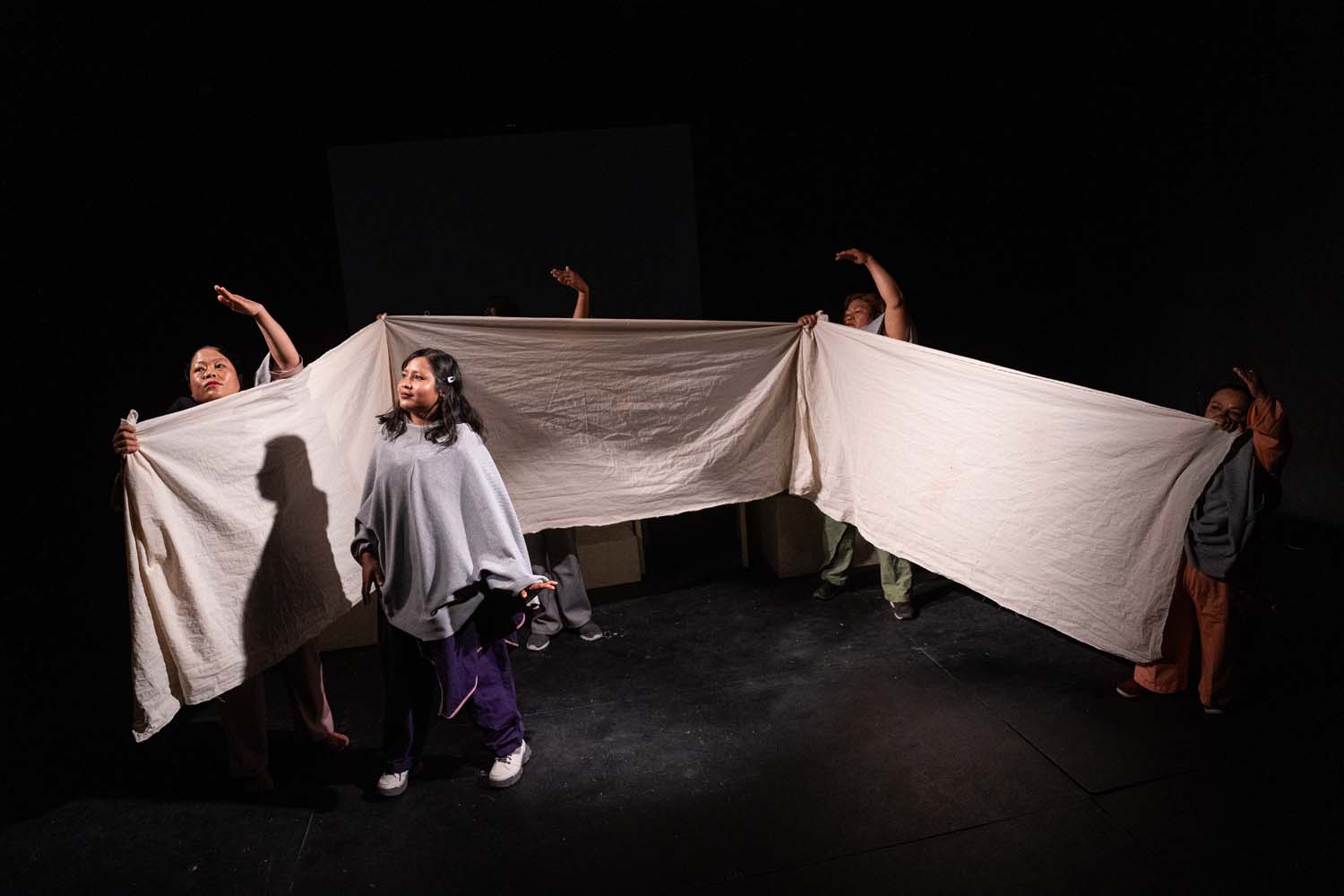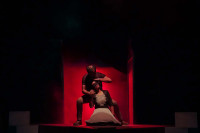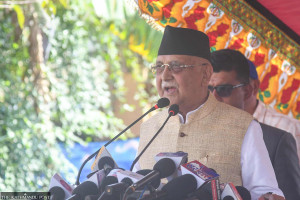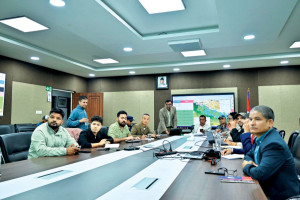Theater
‘New Normal’ brings creative accessibility to theatre
With sign language interpreters as part of the narrative, creative captioning, and a message on discrimination, the play sets a new standard for inclusive theatre in Nepal.
Sanskriti Pokharel
Art is for all. Everyone has the right to create, experience and enjoy it in all its forms. One of the ways to do it is to make it accessible and inclusive. Art should not be a privilege reserved only for those without disabilities.
On March 27, at the Mandala Theatre, people in wheelchairs, those with cane sticks and others from diverse communities gathered to watch the play ‘New Normal’.
It is a rare sight to see people with visual and auditory disabilities as a theatre audience, at least for me. Theatrical productions often fail to accommodate their needs. They are excluded from an art form meant to be universal. But on this occasion, things were different. ‘New Normal’ broke barriers.
With the vision of inclusivity and accessibility, the theatrical play was staged at NITFEST. The play, written by Morna McGeoch, is co-directed by her and Gunjan Dixit. Involving artists from the disability community, the play aims to transform theatre into an inclusive space for all, irrespective of their physical or sensory abilities.
Moreover, this play stands out because it incorporates creative accessibility elements. It integrates accessibility in a way that has rarely been done before. Dixit says, “The objective was to explore creative access in Nepali theatre.”
One innovative aspect of the play is incorporating a sign language interpreter. The interpreter was not there as a sideline presence but as an integral character within the narrative. This was the first time many in the audience had seen such an approach in Nepali theatre.
For those with hearing difficulties, the play features creative captioning. Each character’s dialogue is displayed in different fonts and colours, projected onto the stage backdrop. “We wanted to pioneer the use of creative access in theatre in Nepal,” Dixit adds.
Usually, when a play is about to begin, someone from the team explains rules and regulations to the audience. When ‘New Normal’ was about to start, the rules and regulations were not just explained verbally but also through sign language.
‘New Normal’ is set in the future on Haven, a planet different from Earth. The play follows friends Aaravi, Minal, and Smriti as they navigate a world transformed by the unexpected arrival of people from Earth. These outsiders disrupt their lives in Haven, a utopian world created by and for persons with disabilities who have faced constant mistreatment on Earth. When the trio meets Diya from the Earth, they realise their world is about to change in unimaginable ways.

This original play is the result of an international collaboration between disabled artists in Nepal and Scotland. Developed through ‘Unwrap’, a series of creative workshops, ‘New Normal’ blends ideas from artists in both countries to create an accessible and meaningful theatrical experience.
The play contrasts life on Earth and Haven. On Earth, persons with disabilities face discrimination in all aspects of life, including education, employment, social interactions and so forth. In Haven, the roles are reversed. Disabled individuals, now in a position of authority, begin to mistreat abled newcomers from Earth. The play does not justify this discrimination but highlights the cycle of mistreatment and how easily it can be perpetuated.
One scene shows Diya arriving in Haven. Despite her good intentions and respectful behaviour, she is met with exclusion by disabled individuals who fear she might bring the prejudices of Earth with her. This reversal of roles forces the audience to reflect on societal biases and the importance of empathy.
There is a scene where Diya gives a job interview in Haven. Despite her qualifications, she is denied the position she applied for and is instead offered a ‘lower-level’ job. This serves as a commentary on the realities faced by disabled individuals in today’s world.
Those with disabilities are often overlooked for positions they can excel in. Instead of being judged on their talents, skills, and experience, they are often denied opportunities. In ‘New Normal’, this discrimination is turned on its head wherein able individuals, no matter how deserving, are the ones facing rejection.
This contrast feels like a satire of our present-day reality. It forces the audience to confront an uncomfortable truth: when the roles are reversed, the injustice becomes glaringly obvious.
Yet, the play is not advocating for revenge or further division. Instead, it sends a clear message that discrimination, in any form, is unjust. Job opportunities should be based on merit, not on physical ability or preconceived biases.
For visually impaired audience members like Samjhana Rijal, the play was an enjoyable experience. However, while providing feedback for future improvement, she says, “The songs incorporated in the play were beautiful, but when they played, I felt uncertain about what the actors were doing. Were they dancing? Were they celebrating? I also could not decipher when the scenes transitioned.”
Nonetheless, Rijal praises the entire team for their impactful performance.
Additionally, ‘New Normal’ is also about opportunities for disabled artists. These artists often face exclusion in the performing arts. Creating a space where they can fully participate and showcase their talents challenges existing barriers.
Sarita Thulung has been involved in theatre for many years but describes this as a landmark moment in her career. “I am very happy to be part of this big project,” she says.
Society has also conditioned us to see heroes in a particular way—strong, capable, and, more often than not, abled. Protagonists are typically portrayed as individuals without disabilities. But ‘New Normal’ challenges this ingrained notion. It places disabled individuals at the centre of the narrative, not as side characters, not as objects of pity, but as the heroes of their own story.
With almost every character being disabled, the play dismantles the stereotype. It redefines what it means to be a hero. By doing so, ‘New Normal’ sends a powerful message: representation matters. When such individuals see themselves as protagonists in stories, it reinforces the truth that they, too, can lead, inspire, and triumph.
Moreover, the play carries a powerful message: no one, either abled or disabled, should face discrimination. Respect and dignity should be universal.




 16.12°C Kathmandu
16.12°C Kathmandu










